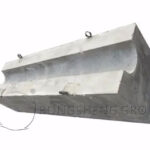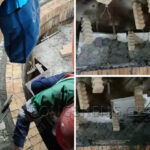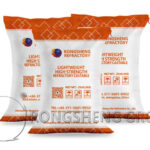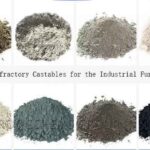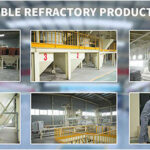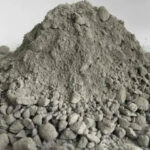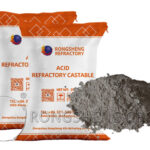As a component part of the kiln body, the cement kiln mouth is the most vulnerable part of the cement kiln and the weakest link in the whole kiln lining. The kiln mouth has the shortest service life of the refractories used in cement kilns. When the refractory material in this part is corroded, it will often cause serious deformation of the kiln mouth shell, or even crack. Finally, the cylinder has to be replaced, which seriously affects normal production and brings great economic losses to the enterprise. Alkaline castable magnesia refractory castables for rotary kilns and new alkali-resistant castables, compared with traditional refractory materials, can increase the service life of the kiln mouth by more than double (up to 180 days or more). It has broad promotion prospects and obvious economic benefits.
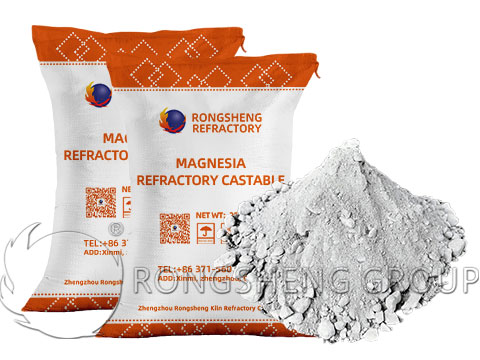
Alkaline castable magnesia refractory castable for rotary kiln
Magnesia refractory castable is made of fused magnesia or sintered magnesia aggregate and fine powder. The binder uses periclase cement, magnesium chloride, magnesium sulfate, water glass, polyphosphate, etc.
- (1) The magnesia castable with periclase cement as the binder has the characteristics of high purity, small line change after burning, and high load softening temperature.
- (2) Magnesium castables using water glass as a binder have the advantages of high strength, and strong corrosion resistance to alkali and sodium salt melts.
- (3) The magnesium castable combined with polyphosphate has the characteristics of high load softening temperature, high strength, and excellent thermal shock resistance.
What is the composition of magnesia refractory castable?
Magnesia refractory castable is prepared from fused magnesia or sintered magnesia aggregate and its fine powder. The binder uses periclase cement, magnesium chloride, magnesium sulfate, water glass, polyphosphate, etc. The magnesia refractory casting material combined with periclase cement has the advantages of high purity, a small change of line after burning, and high softening point under load. However, as the heat treatment temperature increases, especially between 400 and 1200 °C, the cementation will be lost due to the dehydration of the magnesium hydroxide generated by the hydration of magnesia. The combination of refractory aggregate and powder is very loose, and the solid phase reaction is very weak, resulting in a sharp drop in the strength of the refractory castable. It is prone to loosening and peeling.
Magnesia refractory castables using water glass as a binder have the advantages of high strength, corrosion resistance to alkali and sodium salt melts, etc. However, due to the use of water glass as a binder, a large amount of Na2O (or K2O) and SiO2 are brought in. Therefore, the refractoriness and load softening point of magnesia refractory castables are greatly reduced, thereby limiting the maximum use temperature of water glass bonded castables.
The magnesia refractory castable combined with polyphosphate has the advantages of high strength after firing, a small decrease in strength with the increase of heat treatment temperature, high softening point under load, and good thermal shock stability. However, at high temperatures (above 1400°C), the strength of magnesium castables decreases due to the large amount of volatilization of P2O5. In general, sodium polyphosphate is often used as a binder in magnesium castables, such as sodium tripolyphosphate, sodium hexametaphosphate or sodium polyphosphate. The degree of polymerization of polyphosphate and the content of P2O5 has a great influence on the strength of castables. When the average degree of polymerization of polyphosphate is 24, the castable has the highest strength.
In addition, in order to improve the high-temperature strength of magnesia refractory castables, an appropriate amount of calcium-containing materials (such as calcium carbonate, etc.) is added to the components to form Na2O2CaOP2O5 phases with high bonding strength and stable existence at high temperatures. However, no matter what kind of binder is used, it is difficult to overcome the problem of easy hydration of magnesium refractory castables and the phenomenon of cracks in the drying process. For this reason, the method of adding an appropriate amount of silicon oxide ultrafine powder can overcome the problem of hydration.
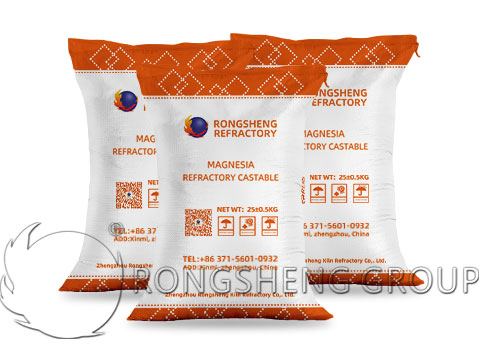
Mixing ratio and properties of magnesia refractory castable
Magnesia refractory castables usually use sintered and fused magnesia as refractory aggregate and powder. Its particle gradation is 5~2.5mm, 33%; 2.5~1.2mm, 1.2~0.6mm, 25%; 0.6~0.15mm; magnesia powder fineness <0.09mm is greater than 85%. Sodium hexametaphosphate solution with a concentration of 30% or an equivalent concentration of 4N is used as a binder, and aluminate cement is used as a coagulant. Some are mixed with a sintering machine, such as iron phosphorus or clay powder. The preparation process is to mix the refractory aggregate with two-thirds of the sodium hexametaphosphate solution, and then add the refractory powder after the surface of the aggregate is completely wet, and stir evenly. Finally, add the remaining sodium hexametaphosphate solution and continue to stir for 1-2 minutes; after vibration molding, it should be cured naturally for 3 days without water. The ambient temperature should not be lower than 10°C, the higher the better.
The refractoriness of magnesia refractory castables is >1830°C, and the load softening temperature of 4% deformation is greater than 1400°C. The temperature of fused magnesia aggregate can reach 1520°C; the drying bulk density is larger and the apparent porosity is smaller. The use of aluminate cement coagulant does not reduce the refractoriness but increases the load-softening temperature. At the same time, the compressive strength after firing at 1000°C increased from 19.1MPa to 26.5~34.8MPa, which was caused by the formation of Na2O·2CaO·P2O5 minerals. From the perspective of strength change characteristics, the medium temperature strength has a large decrease, but the absolute value is still greater than 25MPa. Therefore, it does not affect the use of magnesia refractory castables. The reason for the decrease in strength can be seen from the petrographic analysis, which is caused by the change in the structure of sodium hexametaphosphate during the heating process and the lack of sintering of the base material.
The relationship between concentration and strength of sodium hexametaphosphate solution. With the increase of its concentration, the compressive strength after burning at 1000°C is peak-shaped, that is, when the concentration of sodium hexametaphosphate solution is 23%~30%, the strength is the best, which can reach more than 30MPa. When preparing sodium hexametaphosphate refractory castable, its concentration should be selected as 25%~30%.
In alkaline refractory castables, under the premise of ensuring the workability of the mixture, the amount of sodium hexametaphosphate solution should be used as little as possible to ensure its high-temperature performance. In addition, the type of refractory aggregate, particle gradation, amount of bone powder, type and amount of aluminate cement, etc. also affect the performance of refractory castables and should be selected reasonably.
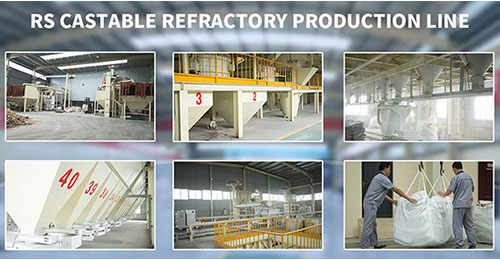
Rotary kiln refractory castable manufacturer
Rotary kiln refractory castable manufacturer is a powerful manufacturer and seller of refractory castables. Rongsheng’s monolithic refractory castable production line has an annual output of 80,000 tons. Moreover, it is equipped with an advanced and environmentally friendly fully automatic production environment and production equipment. Our production line has served the supply of monolithic refractories for many turnkey projects. And received praise from customers. If you are looking for a manufacturer of monolithic refractory materials and buy rotary kiln refractory castables, please try to contact us. We will provide you with the most suitable refractory castable products according to your specific production needs.

